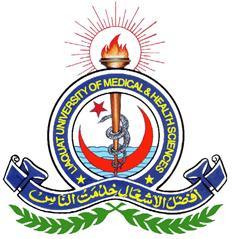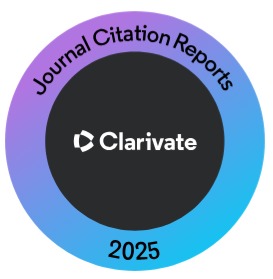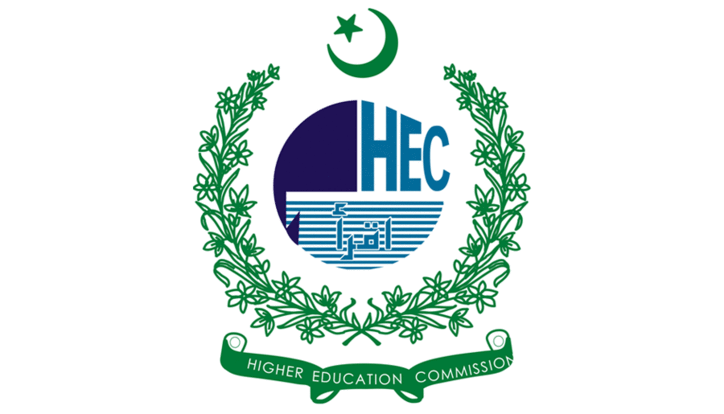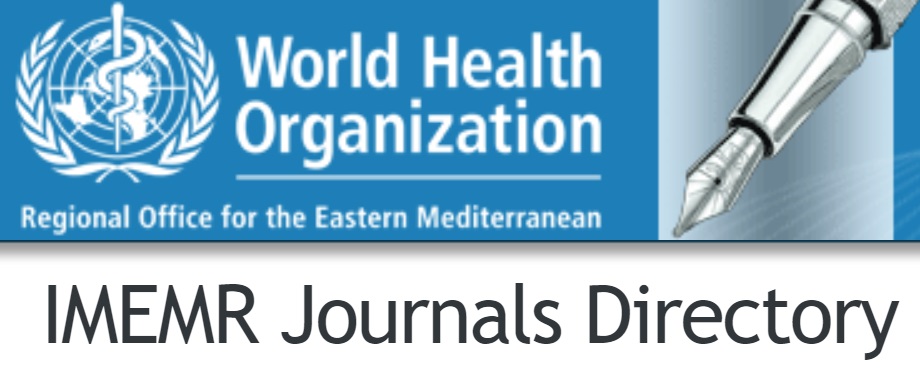Acute Diarrheal Outbreak in 2022 Karachi, Pakistan: To Determine its Clinical Spectrum, Risk Factors and Complications
Keywords:
Acute diarrheal illness, faecal oral route, borne diseases, water contamination, hand hygiene, pipeline contamination, acute kidney failure.Abstract
Objective: To identify the possible source of the outbreak and risk factors and suggest evidence-based recommendations for prevention and disease control in Pakistan.
Methodology: This cross-sectional study was conducted in Civil Hospital Karachi, Pakistan, from March to May 2022. A total of 90 patients with a history of more than one watery stool in 24 hours were included in the study. The data about demographics, hygienic practices, illness characteristics, treatment, and biochemical parameters, including serum electrolytes and creatinine levels, were recorded. IBM SPSS version 26 was used for data analysis.
Results: The majority (83.3%) of symptoms were for less than one week. The mean family size was 6.7, SD 3.2, and 73.3% of patients had low income. Un-filtered municipal pipelines were the primary source of drinking water for 85.6% of patients, and 82.2% drank from tap water. Diarrhea (100%) and vomiting (81.1%), followed by abdominal discomfort (53.3%), were the most common symptoms, and 19 patients suffered acute kidney injury that resulted in the need for dialysis for a short time. Among 91 cases, only seven stool samples were positive for Vibrio cholera.
Conclusions: The study suggests the contaminated drinking water as a source of the outbreak, with independent risk factors such as large family size and low income. V. Cholera was indicated as the causative pathogen but with a low positivity rate; it may be due to the presence of uncommon serotype or a mutant variant of vibrio cholera for the outbreak.
References
Dadonaite B, Ritchie H, Roser M. Diarrheal diseases. Published Online at OurWorldInData.org. 2018; Available from: https://ourworldindata.org/diarrheal-diseases#where-are-people-dying-from-diarrheal-diseases.
Ali M, Nelson AR, Lopez AL, Sack DA. Updated global burden of Cholera in endemic countries. PLoS Negl Trop Dis. 2015; 9(6): e0003832.
doi: 10.1371/journal.pntd.0003832.
CDC. Global WASH Fast Facts. 2022 [Updated May 31, 2022; cited June 11, 2022]. Centres for Disease Control and Prevention. Available from: https://www.cdc.gov/healthywater/global/wash_statistics.html.
Organization WH. Cholera. 2022 [Updated March 30, 2022; cited June 11, 2022]. World Health Organization. Available from: https://www.who.int/health-topics/cholera#tab=tab_1.
Fewtrell L, Colford Jr JM. Water, sanitation and hygiene in developing countries: interventions and diarrhea--a review. Water Sci Technol. 2005; 52(8): 133-142. [Erratum in 2005; 52(12):299].
GBD 2016 Diarrhoeal Disease Collaborators. Estimates of the global, regional, and national morbidity, mortality, and aetiologies of diarrhea in 195 countries: a systematic analysis for the Global Burden of Disease Study 2016. Lancet Infect Dis. 2018; 18(11): 1211-1228. doi: 10.1016/S1473-3099(18)30362-1.
Daud MK, Nafees M, Ali S, Rizwan M, Bajwa RA, Shakoor MB et al. Drinking Water Quality Status and Contamination in Pakistan. Biomed Res Int. 2017; 2017: 7908183. doi: 10.1155/2017/7908183.
Anandan M, Saraswathi VS, Rubeshkumar P, Ponnaiah M, Jesudoss P, Karumanagounder K et al. Outbreak of acute diarrhoeal disease attributed to consumption of fecal contaminated water supplied through damaged pipelines in Thiruper, Tiruvallur district, Tamil Nadu, India, 2016. Clin Epidemiol Glob Health. 2021; 10: 100701. doi: 10.1016/j.cegh.2021.100701.
Gupta G, Singh A, Dikid T, Saroha E, Sodha SV. Acute diarrheal disease outbreak in Muzaffarpur Village, Chandauli District, Uttar Pradesh, India. Indian J Public Health. 2021; 65(Supplement): S34-S40. doi:10.4103/ijph.IJPH_1111_20.
Freeman MC, Stocks ME, Cumming O, Jeandron A, Higgins JP, Wolf J et al. Hygiene and health: systematic review of handwashing practices worldwide and update of health effects. Trop Med Int Health. 2014; 19(8): 906-16. doi: 10.1111/tmi.12339.
Bah D, Gebru G, Hakizimana JL, Ogbonna U, Sesay B, Bah B et al. Prevalence and risk factors of diarrheal diseases in Sierra Leone, 2019: a cross-sectional study. Pan Afr Med J. 2022; 41: 3. doi: 10.11604/pamj.2022.41.3.32403.
Ali G, Bashir MK, Abbas S, Murtaza M. Drinking-water efficiency, cost of illness, and peri-urban society: An economic household analysis. PLoS One. 2021; 16(9): e0257509. doi: 10.1371/journal.pone.0257509.
Ahmad I, Mustafa U, Haq M. Household's Willingness to Pay for Safe Drinking Water: A Case Study of Abbottabad District. Pak Develop Rev. 2007; 46(4): 1137–53. doi: 10. 30541/v46i4IIpp.1137-1153.
Bradshaw C, Zheng Y, Silver SA, Chertow GM, Long J, Anand S. Acute Kidney Injury Due to Diarrheal Illness Requiring Hospitalization: Data from the National Inpatient Sample. J Gen Intern Med. 2018; 33(9): 1520-1527. doi: 10.1007/s11606-018-4531-6. Epub 2018 Jun 18.
Alam MM, Khurshid A, Shaukat S, Suleman RM, Sharif S, Angez M et al. Epidemiology and genetic diversity of rotavirus strains in children with acute gastroenteritis in Lahore, Pakistan. PLoS One. 2013; 8(6): e67998. doi:10.1371/journal.pone.0067998. [Erratum published]. PLoS One. 2013; 8(12): e67998. doi:10.1371/annotation/68a1d471-b3b1-45e7-9b81-d242f1c20ad1].
Clemens JD, Nair GB, Ahmed T, Qadri F, Holmgren J. Cholera. Lancet. 2017; 390(10101): 1539-1549. doi:10.1016/S0140-6736(17)30559-7.
Ahmed J, Wong LP, Chua YP, Channa N, Mahar RB, Yasmin A et al. Quantitative Microbial Risk Assessment of Drinking Water Quality to Predict the Risk of Waterborne Diseases in Primary-School Children. Int J Environ Res Public Health. 2020; 17(8): 2774. doi: 10.3390/ijerph17082774.
Rai KR, Mukhiya RK, Thapa S, Rai G, Sabina KC, Thapa PM et al. Diarrheal disease outbreak in Gaidatar village of Rautahat District, Nepal. BMC Res Notes. 2019; 12(1): 124. doi: 10.1186/s13104-019-4156-9.
Directorate General Health Services Sindh. Advisory for Prevention and Control of Acute Watery Diarrhea/Cholera. Available from: https://sindhhealth.gov.pk/Advisory.
Organization WH. Household water treatment and safe storage. 2013. Available from: https://www.who.int/teams/environment-climate-change-and-health/water-sanitation-and-health/water-safety-and-quality/household-water-treatment-and-safe-storage.
Zohra T, Ikram A, Salman M, Amir A, Saeed A, Ashraf Z et al. Waste water based environmental surveillance of toxigenic Vibrio cholerae in Pakistan. PLoS One. 2021; 16(9): e0257414. doi: 10.1371/journal.pone.0257414.
Lantagne D, Yates T. Household Water Treatment and Cholera Control. J Infect Dis. 2018; 218(Suppl 3): S147-S153. doi:10.1093/infdis/jiy488.
International Federation of Clinical Chemistry. Standard values by IFCC. Available from: https://www.ifcc.org/media/479069/ ifccenewsjuly2021.pdf.
Downloads
Published
How to Cite
Issue
Section
License
Copyright (c) 2023 Journal of Liaquat University of Medical & Health Sciences

This work is licensed under a Creative Commons Attribution-NonCommercial-ShareAlike 4.0 International License.
Submission of a manuscript to the journal implies that all authors have read and agreed to the content of the undertaking form or the Terms and Conditions.
When an article is accepted for publication, the author(s) retain the copyright and are required to grant the publisher the right of first publication and other non-exclusive publishing rights to JLUMHS.
Articles published in the Journal of Liaquat University of Medical & health sciences are open access articles under a Creative Commons Attribution-Noncommercial - Share Alike 4.0 License. This license permits use, distribution and reproduction in any medium; provided the original work is properly cited and initial publication in this journal. This is in accordance with the BOAI definition of open access. In addition to that users are allowed to remix, tweak and build upon the work non-commercially as long as appropriate credit is given and the new creations are licensed under the identical terms. Or, in certain cases it can be stated that all articles and content there in are published under creative commons license unless stated otherwise.























